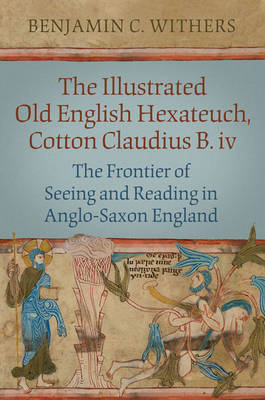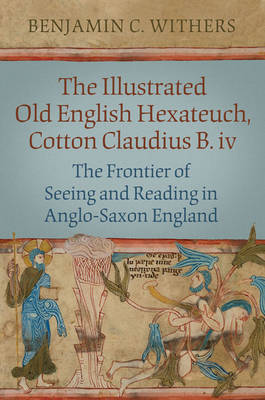
- Retrait gratuit dans votre magasin Club
- 7.000.000 titres dans notre catalogue
- Payer en toute sécurité
- Toujours un magasin près de chez vous
- Retrait gratuit dans votre magasin Club
- 7.000.0000 titres dans notre catalogue
- Payer en toute sécurité
- Toujours un magasin près de chez vous
The Illustrated Old English Hexateuch, Cotton Ms. Claudius B.IV
The Frontier of Seeing and Reading in Anglo-Saxon England
Benjamin C WithersDescription
The Old English Hexateuch is a manuscript of the earliest vernacular translation of the Old Testament books of Genesis through Joshua. The texts belong, in part, to the Anglo-Saxon monk Aelfric (950?-1010?) and to several anonymous translators and at least one artist who compiled these translations and illustrated them with nearly four hundred narrative images, which are carefully integrated into the manuscript.
The Hexateuch testifies to the creativity and innovation of Anglo-Saxon bookmakers and stands as an important, if little known, witness to the relationship between early book-making technology and the history of literacy. Benjamin C. Withers examines codicological features of the manuscript, focusing on the working processes of the artist and scribes and seeking to understand how they integrated newly translated text with newly developed imagery so deftly. Grounded in art history and literary theory, this work considers the narrative relationships created by the careful design and seeks to place the Hexateuch within the broader social and cultural development of vernacular literacy in the eleventh century.
Spécifications
Parties prenantes
- Auteur(s) :
- Editeur:
Contenu
- Nombre de pages :
- 464
- Langue:
- Anglais
- Collection :
Caractéristiques
- EAN:
- 9780802091048
- Date de parution :
- 01-08-07
- Format:
- Livre
- Format numérique:
- Met stofomslag
- Dimensions :
- 163 mm x 233 mm
- Poids :
- 875 g

Les avis
Nous publions uniquement les avis qui respectent les conditions requises. Consultez nos conditions pour les avis.






